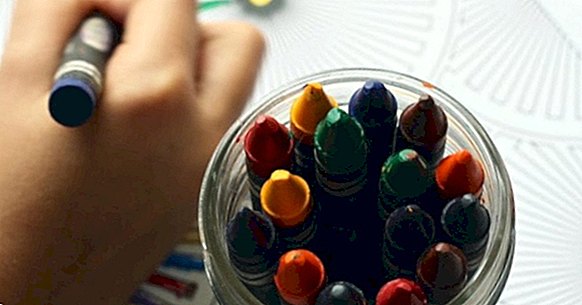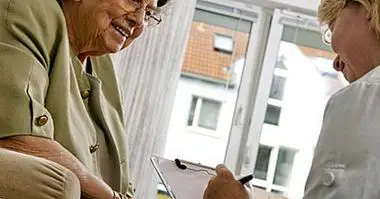Play therapy: theoretical principles, uses and application
When we are adults, most of the population is able to express their concerns, feelings, ideas, beliefs, fears and insecurities through language.
We can do this because we have enough cognitive capacity to conceptualize and orally express abstract aspects and understand what happens to us. This may not happen in the case of a boy or girl , since it is possible that he understands reality completely or does not know or dares to express it directly. This is what happens, for example, with children who have experienced situations such as sexual abuse or intrafamily violence.
Fortunately, It is possible through play therapy that this type of population can express their fears and conflicts in an indirect way. Next we will see what this form of psychological intervention consists of.
- Related article: "Types of psychological therapies"
The game as an element of communication and expression
If we observe a group of lions, a group of apes or even a group of people, it is frequent to see how often, especially among the youngest members, there appear actions and behaviors that apparently do not have an intentionality aimed at an objective concrete beyond that of having fun. In other words, in a large number of species it is common to see play behaviors.
While some people may think that playing is just a waste of time, the truth is that the game is of fundamental importance, especially in the development period. And this type of actions allow us to exercise and train our body and our mind and develop different abilities such as cognition, psychomotricity and communication between individuals .
In humans, the game helps to reduce the level of tension and increases the ability to bond with our environment, being of help to learn to relate and at the same time apply and improve our cognitive, emotional and social skills. It also allows us to express the contents of our mind such as things we live, fears and insecurities that remain in our mind, desires and impulses.
There have been multiple experts who have noticed this fact and have established that from the game it is possible to establish mechanisms and techniques that allow analyzing and helping to treat different problems . These techniques can be used in so-called play therapy.
- Maybe you're interested: "13 games and strategies to exercise the mind"
The play therapy
Play therapy is a method used in Psychology for the analysis and treatment of the problems of patients, generally in the case of children or subjects with neurodevelopmental disorders or severe intellectual disability.
It is based on the use of the game as an element of communication, thanks to which the patient can get to externalize their emotions and experiences in a symbolic way. It not only serves as an expression mechanism, but also allows the subject process and work information at the conscious level and even elaborate and / or learn ways to cope with them. Its operation is apparently simple, but requires a high level of observation by the professional and the ability of the subject to feel safe and supported.
Generally it is applied in a constant way and more or less close in time, such as weekly sessions in the consultation, school or even in the home of the subject in a generally individual way. The therapist can carry out the session in a directive way (directing the games) or non-directive if the free play of the minor is allowed.
Previously, materials and toys are selected that allow the minor to express themselves and from which to establish symbolisms , such as puppets, animals, toy houses, building elements, clay or play dough or musical instruments.
The information that can be extracted from the game is a lot. In addition to the symbolism that the subject imprints to the game, other aspects that may give interesting data are the tendency to use specific games or to act in a certain way during them, if the child includes the therapist in the game or ignores it or if he retakes games of the previous sessions or on the contrary a new game starts can be aspects to value.
If creative elements are used, it is also relevant if at the end of the game he tries to preserve them or that the therapist preserves them or it destroys them. The significance of all these aspects will depend on the case.
- Related article: "The power of the game: why is it necessary for children?"
Functions and advantages of play therapy
Through this type of therapy, the aim is to facilitate the expression of emotions and situations that the child finds difficult to express in words, whether due to the trauma they involve or the lack of sufficient linguistic capacity to do so. For this, the game is used, through which can express their emotions, feelings and experiences in a symbolic way .
The game context also supposes a positive climate that can favor the interaction of the therapist with the minor, establishing a positive rapport that allows the patient to feel safe and trust the professional.
In addition, the participation of the professional in the game (which must be done from the perspective and direction of the child) allows the patient not only to express himself, but can observe and acquire new behaviors and ways of seeing reality that by itself It could not be raised. It is useful for training social and emotional skills .
Finally, this type of therapy helps the patient not only to express what happened but also to be able to process it to later work on it, as well as to promote their resilience or resistance to adversity and help them to use adaptive coping mechanisms and strategies.
Types of activities that are carried out
There is a high heterogeneity in the activities that may end up being carried out in a play therapy session. The specific type of activity will depend on the needs and preferences of the minor. Between the most frequent ludic techniques and activities We can find several types of methods, of which some examples are presented below.
1. Toys based on symbolic expression
Using a doll's house or symbolic elements such as a kitchen usually causes children to represent situations similar to those that live in the home. Likewise, the use of stuffed animals and toy animals is common from which the child can play freely and introduce the therapist while explaining what is happening.
2. Theatralization
Also the role play and the use of costumes allows the children to express their internal concerns based on the theatrical representation. Imitation games or simulating concrete situations can serve not only as a mechanism of expression, but also as exposure to conflicting situations and as modeling to learn how to act before them.
3. Methods linked to body expression
These types of methods are especially important in the case of subjects who avoid or seek excessive physical contact. Within this group of techniques we can include dance, imitation or games in which fights or fights are represented (for example, using toy swords).
4. Methods related to artistic creation and construction
Drawing, painting and the use of clay or play dough are also frequent in the use of play therapy, offering information of great value and allowing the expression of your psyche. Other games that are usually used are those in which the patient has to elaborate or build something .
You can tell a story from visual elements that are presented to you (for example, present certain objects or drawings), use stories or use building elements such as LEGO figures or puzzles .
Situations and problems in which it is appropriate
Play therapy can be used in a wide variety of problems and disorders of various kinds, and in fact it is used in many areas of intervention.
Some disorders and situations in which it can be very useful is in the presence of emotional disturbances, anxiety, panic or low self-esteem. Children who have experienced traumatic events such as sexual abuse , intrafamily violence, abandonment of one or both parents, bullying or deaths of loved ones can express and process their sensations and experiences with this type of therapy. It is also useful to process, express the emotions that cause and work phenomena such as divorce of parents, changes of address or economic precariousness.
Finally, it is also very helpful in children with communication problems and children with disorders such as ADHD, obsessions, autism, eating disorders or mood disorders such as depression.
In general, this type of therapy causes a decrease in fear and anxiety, an increase in the sense of control, self-confidence and social skills and the generation of new perspectives and coping strategies , in addition to a substantial improvement in mood.
Bibliographic references:
- Landreth, G.L. (1991). Play Therapy. New York



















